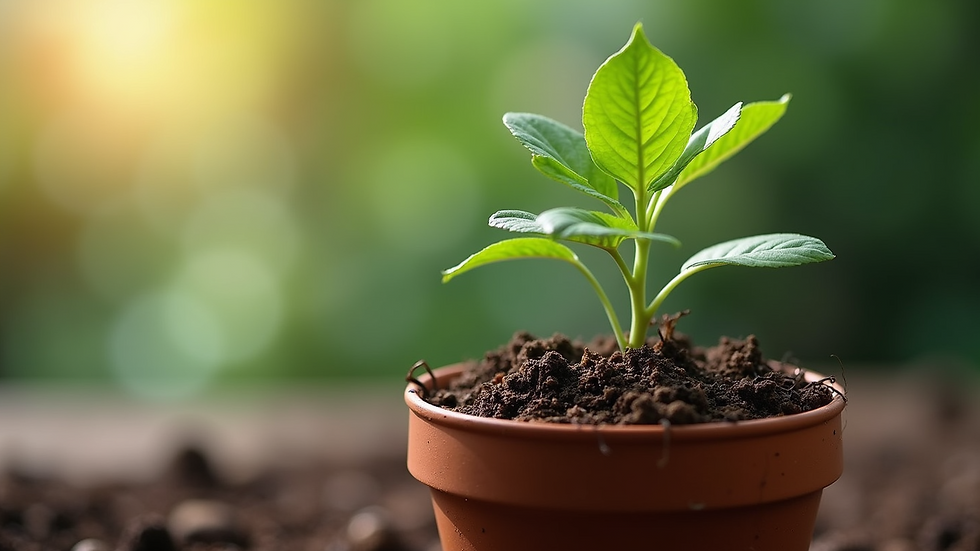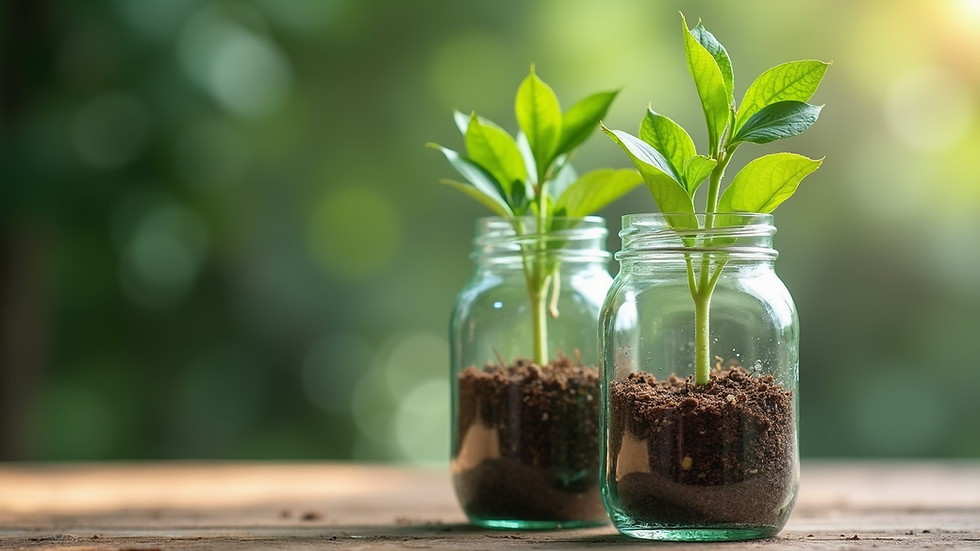Mastering Indoor Plant Care: Tips for Thriving Plants
- JoAnne Blaskiewicz
- Oct 8
- 4 min read
Bringing plants into our homes is like inviting a little piece of nature to brighten our days. I’ve found that with a bit of love and attention, even the most novice plant parent can nurture a thriving indoor garden. Whether you’re just starting or looking to improve your green thumb, mastering houseplant care basics is a joyful journey. Let’s explore some practical tips and insights that will help your plants flourish and fill your space with life!
Understanding Houseplant Care Basics
When I first started caring for houseplants, I quickly realized that each plant has its own personality and needs. But there are some universal principles that apply to most indoor plants. These basics include light, water, soil, humidity, and temperature. Getting these right can make all the difference between a droopy leaf and a vibrant, healthy plant.
Light: Most houseplants love bright, indirect light. Placing your plants near a window with filtered sunlight usually works well. Avoid harsh direct sun that can scorch leaves.
Water: Overwatering is a common mistake. I learned to check the soil moisture before watering. If the top inch feels dry, it’s time to water. Remember, plants hate soggy roots!
Soil: Using well-draining soil helps prevent root rot. I often mix potting soil with perlite or sand for better drainage.
Humidity: Many tropical plants thrive in higher humidity. I use a humidifier or place a tray of water near my plants to keep the air moist.
Temperature: Most houseplants prefer temperatures between 65-75°F. Avoid placing them near drafts or heating vents.
By paying attention to these factors, you’ll create a nurturing environment that supports your plants’ growth and happiness.

What are the 5 Basic Needs of a Plant?
To truly master indoor gardening, it helps to understand the five essential needs every plant requires to thrive. These are:
Light: Plants use light to perform photosynthesis, which fuels their growth. Different plants have different light requirements, so it’s important to match your plant to the right spot.
Water: Water transports nutrients and keeps the plant hydrated. Both underwatering and overwatering can stress your plant.
Nutrients: Plants need minerals and nutrients from the soil to grow strong. Using a balanced fertilizer every few weeks during the growing season can boost their health.
Air: Plants need fresh air for gas exchange. Good airflow helps prevent mold and pests.
Space: Plants need room to grow their roots and leaves. Repotting when your plant outgrows its pot ensures it has enough space to thrive.
Understanding these needs helps me tailor my care routine to each plant’s unique preferences. It’s like learning a new language that your plants speak!

Tips for Watering Your Indoor Plants
Watering can be tricky, but it’s one of the most important parts of houseplant care basics. I’ve learned a few tricks that help me keep my plants happy and hydrated without drowning them.
Check the soil first: Stick your finger about an inch into the soil. If it feels dry, it’s time to water.
Water thoroughly: When you water, do it slowly until water drains out of the bottom of the pot. This ensures the roots get enough moisture.
Empty excess water: Don’t let your pots sit in standing water. Empty the saucer to prevent root rot.
Adjust for seasons: Plants usually need less water in winter when they grow slower.
Use room temperature water: Cold water can shock roots, so I always use water that’s close to room temperature.
By following these simple steps, you’ll avoid common watering mistakes and keep your plants thriving.
Creating the Perfect Environment for Your Plants
I’ve found that creating a cozy environment tailored to your plants’ needs makes a huge difference. Here are some ways to optimize your indoor space:
Light placement: Rotate your plants every week so all sides get light evenly.
Humidity boosters: Group plants together to create a mini greenhouse effect. Misting leaves occasionally also helps.
Temperature control: Keep plants away from cold drafts or hot radiators.
Clean leaves: Dust can block light, so gently wipe leaves with a damp cloth every few weeks.
Pest prevention: Inspect plants regularly for pests like spider mites or aphids. Early detection makes treatment easier.
These small habits create a nurturing home for your plants and help them flourish.

Why Choosing Quality Plants Matters
One thing I’ve learned is that starting with healthy plants makes all the difference. That’s why I love sourcing my plants from places that prioritize quality and organic growing methods. Healthy plants are more resilient and easier to care for.
If you’re looking for a trusted source, I recommend checking out Leafy Loft. They offer a wonderful selection of organically grown houseplants that come with care tips and support. It’s like having a little plant expert by your side!
When you choose quality plants, you’re investing in a long-lasting relationship with your green friends. They’ll reward you with beauty, fresh air, and a calming presence in your home.
Growing Together: Your Plant Care Journey
Taking care of houseplants is a rewarding experience that grows with you. Each plant teaches you something new about patience, observation, and nurturing. I encourage you to enjoy the process and celebrate every little success, from new leaves to blooms.
Remember, even the best plant parents have occasional hiccups. The key is to keep learning and adapting. Your plants will thrive with your care, and your home will become a lush, inviting sanctuary.
Happy planting!
If you want to dive deeper into indoor plant care, Leafy Loft is a fantastic place to start your journey. Their passion for plants shines through in every leaf and pot they offer. Here’s to growing green thumbs and happy homes!



Comments